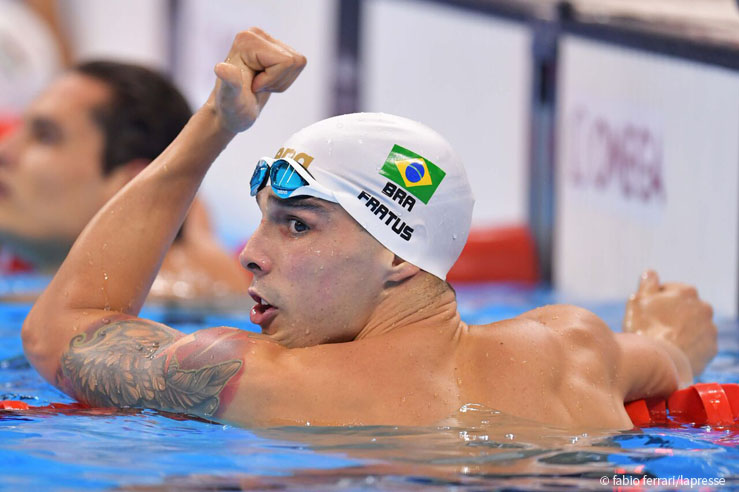Here’s a way to improve your stroke without the need for special facilities or gym! If the last time we taught you to push to do the push-ups, today we teach you to pull to do the PULL UPS!
Pull ups are the cult bodyweight exercises targeting the main propulsion muscle used in swimming: the LATISSIMUS DORSI! This muscle (always along with other assisting muscles) is the one that determines your stroke length (how many meters your body travels forward on each arm stroke). All the back is targeted during pull-ups, especially the TRAPEZIUS, the ADDUCTORS OF THE SHOULDER BLADES, and we should not forget the SHOLDERS and the ARMS (biceps or triceps based on the drill, as we will shortly see). The CORE STABILITY helps maintain the balance during the exercise, therefore, the abdominal/lumbar area are targeted too.
As already mentioned, there are two types of pull ups that differ based on the grip on the bar: pronated or supinated grip. The execution is the same, only the grip is different, and each one involves different muscles of the arms. The triceps are working harder in case of a pronated grip, and the biceps in the supinated grip.
Let’s talk now about the execution of the pull ups:
– Position yourself under the bar, in the center.
– Grab the bar using a pronated/supinated grip with hands shoulder-width apart, neither wider apart, nor closer.
– Pull up your body until you get to touch the bar with your chest.
– Get down, by lowering yourself in a controlled manner, until your arms are completely relaxed, and then start all over again. When you get to relax your arms, be careful to avoid “relaxing” the shoulders. Keeping them always tensed, will guarantee a quality workout.
It may seem very simple when talking about it, but the pull ups are a very complex exercise and it is difficult for a novice to do sets. Here are two ways to do the basic pull up.
EASY PULL-UP 1
Use a bar at a height that allows you to rest your feet flat on the ground. The exercise remains the same, but being able to rest your feet on the ground reduces the weight to be pulled, thus facilitating the workout. Proceed gradually by bending your knees more and more, and then you can get to the “second level”.
EASY PULL-UP 2
Very similar to basic pull-up, but with two differences:
– To pull up your body, for each repetition, help yourself with a slight push with your legs.
– Lower your body by slowing down the motion as much as possible. When you can’t slow down anymore, it means that you finished the set.
After two easy exercises, it’s time to give you two options which are more complicated than the classic pull up.
PULL UPS WITH JUMP
This is a more dynamic version than the classic pull ups. You’ll have to “simply” pull up stronger to lift your body in such a way as to be able to release the grip for a few moments, just as if you were making a small jump.
WEIGHTED PULL-UPS
Do weighted pull ups using weights, such as a sub weighted belt. Train by increasing the weight from time to time.
For each type of pull up, whether you’re a novice or an expert, I suggest using two workout methods:
– 3-4 sets with maximum number of repetitions (as many as you can do) and complete recovery period of at least 1h30min /2h. In the second set try to repeat the same number of repetitions as the first time, and so on for the third and fourth set.
– 3-4 sets with fixed repetitions and incomplete recovery time of maximum 1h. For the number of repetitions try 60-70% of your maximum reps. For example, if your maximum for that type of repetition is 10, then do 3-4 sets of 6-7 reps.
—————
Are you looking for perfect clothing for your training? Be inspired by our collection!
